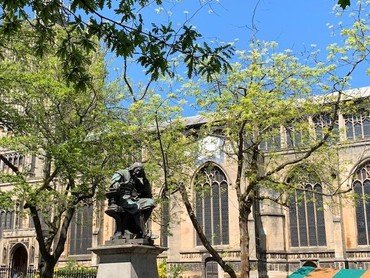Sir Thomas Browne
Sir Thomas Browne (1605-82), one of the supreme writers of English prose, is without doubt Mancroft’s most famous parishioner.
He came to Norwich in 1637 and practised as a physician from his house in the Haymarket. In 1665 he was elected a Fellow of the Royal College of Physicians, and on 29 September 1671 in St Andrew’s Hall was knighted by Charles II.
Sir Thomas was a skilled physician who grew the ingredients of his medicines in his own garden and conducted the first experiments in embryology; one of the ablest naturalists of his day, a pioneer of botany and zoology; an antiquarian, inspired by the urns dug up at Walsingham in 1658 to write his finest book, Urne-Buriall; and a conservationist, cataloguing the monuments in Norwich Cathedral and other casualties of the Civil War.
A pioneer in so many branches of learning, he had to make up words where none existed, including ‘electricity’, ‘hallucination’ and ‘antediluvian’.
Beneath his memorial in the sanctuary, a Latin couplet on a paving stone marks the re-interment of his skull in 1922. The skull was taken from his coffin when accidentally open in 1840 and was kept for many years in the museum of the Norfolk and Norwich Hospital until its return in 1922.
Outside the church you will find a fine statue of Browne on the Haymarket looking towards the site of his house.
For more information about Thomas Browne, visit the Sir Thomas Browne Society page.

